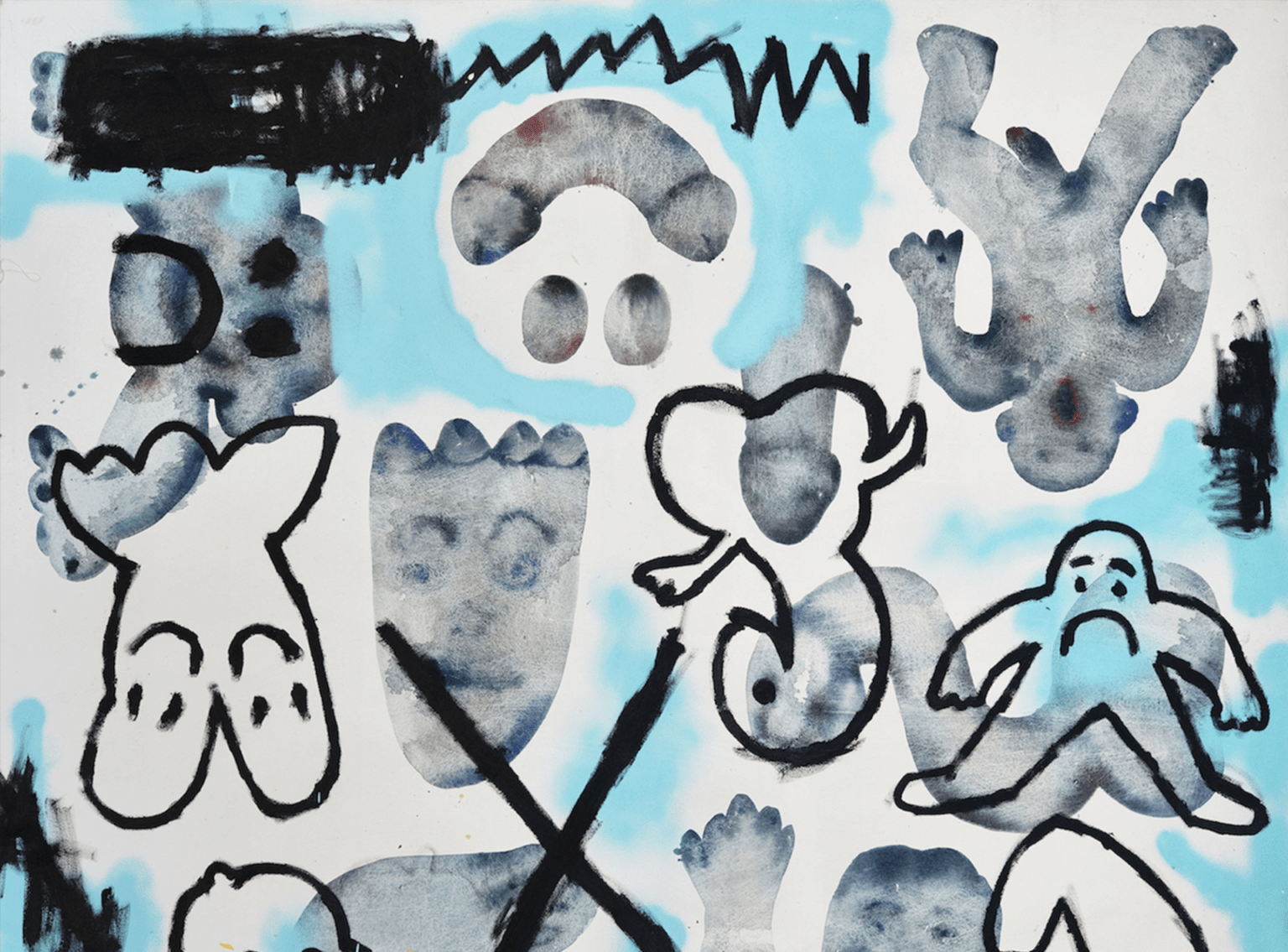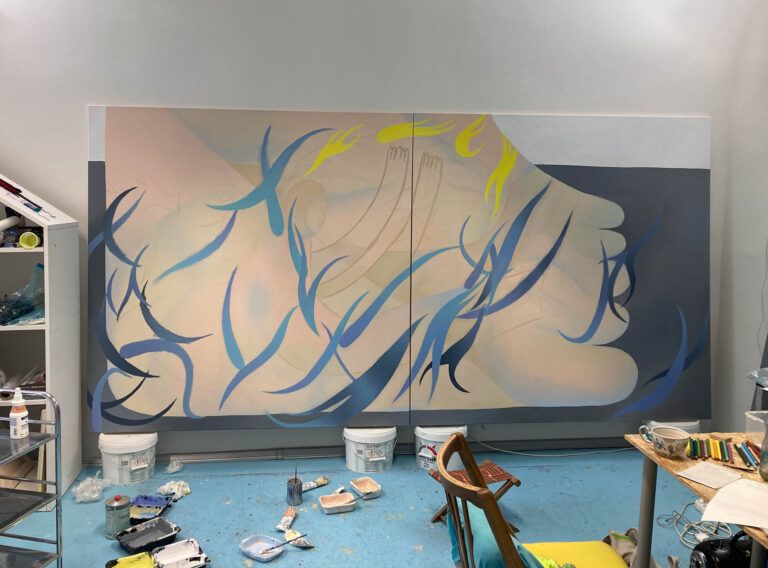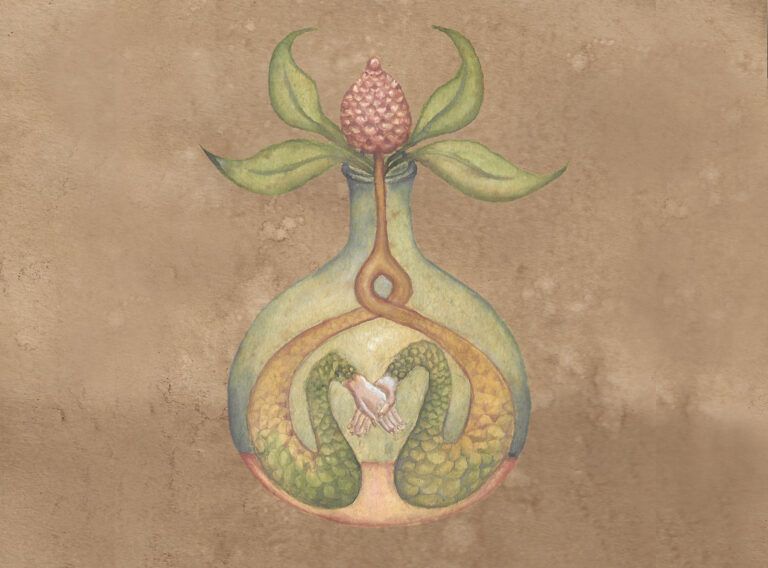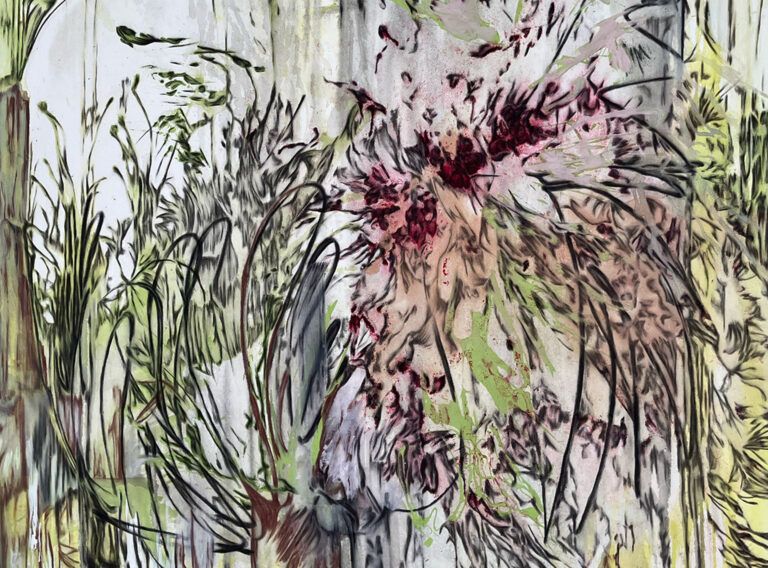WORDS BY THE AUTHOR / The attached paintings are part of my cycle dealing with a contemporary take on cave and primitive art motives. In prehistoric art forms, human (particularly male) genitalia have been largely viewed as symbols of fertility, good fortune and wealth, devoid of sexual or erotic connotations and gender dominance.
![Liput Aleksandra – z cyklu Lascaux, 2018, techn mieszana, 160x140cm [1] – [fot Adam Gut] 2000px Liput Aleksandra - z cyklu Lascaux, 2018, techn mieszana, 160x140cm [1] - [fot Adam Gut] 2000px](https://swarmmag.com/wp-content/uploads/2021/08/Liput-Aleksandra-z-cyklu-Lascaux-2018-techn-mieszana-160x140cm-1-fot-Adam-Gut-2000px.jpg)
Over time, they’ve mutated into objects of desire and lust, often surrounded by strong taboos; recent past has seen the emergence of dichotomy between prevailing taboos on one hand, and growing objectification and primitive sexualisation through both pornographic industry outright and increasingly sexually explicit mainstream culture on the other.
![2018-10-27 – Aleksandra Liput – behappyalways – p4_s2+p_02_c – [fot Adam Gut] 2000px 2018-10-27 - Aleksandra Liput - behappyalways - p4_s2+p_02_c - [fot Adam Gut] 2000px](https://swarmmag.com/wp-content/uploads/2021/08/2018-10-27-Aleksandra-Liput-behappyalways-p4_s2p_02_c-fot-Adam-Gut-2000px.jpg)
![2018-10-27 – Aleksandra Liput – behappyalways – p6_04_ED1sc – [fot Adam Gut] 2000px 2018-10-27 - Aleksandra Liput - behappyalways - p6_04_ED1sc - [fot Adam Gut] 2000px](https://swarmmag.com/wp-content/uploads/2021/08/2018-10-27-Aleksandra-Liput-behappyalways-p6_04_ED1sc-fot-Adam-Gut-2000px.jpg)
My work aims to break those taboos by relieving the tensions around references to nudity and genitalia. I tackle this through recontextualising those elements in playful contexts, often de-sexualising some human silhouettes by removing their genitalia altogether, only to exaggerate them in a caricatured fashion in some others or allocate anthropomorphic qualities to the body parts themselves.
![Liput Aleksandra – Wesoly czlonek, 2017, tempera spray, 40x40cm [fot Adam Gut] 2000px copy Liput Aleksandra - Wesoly czlonek, 2017, tempera spray, 40x40cm [fot Adam Gut] 2000px copy](https://swarmmag.com/wp-content/uploads/2021/08/Liput-Aleksandra-Wesoly-czlonek-2017-tempera-spray-40x40cm-fot-Adam-Gut-2000px-copy.jpg)
![Liput Aleksandra – Smile, 2018, techn mieszana, 100x100cm – [fot Adam Gut] 2000px Liput Aleksandra - Smile, 2018, techn mieszana, 100x100cm - [fot Adam Gut] 2000px](https://swarmmag.com/wp-content/uploads/2021/08/Liput-Aleksandra-Smile-2018-techn-mieszana-100x100cm-fot-Adam-Gut-2000px.jpg)
By drawing both from ancient cave paintings and motives from contemporary trash art (such as quasi-vandalist forms often scribbled in public toilets or back pages of student’s notepads) I aim to render them demystified, harmless and approachable – a sense that is multiplied by use of glitter and infantile or idyllic colours in some works.


![Liput Aleksandra – Bez tutulu, 2017, tempera spray obiekty, 40x50cm [fot Adam Gut] 2000px Liput Aleksandra - Bez tutulu, 2017, tempera spray obiekty, 40x50cm [fot Adam Gut] 2000px](https://swarmmag.com/wp-content/uploads/2021/08/Liput-Aleksandra-Bez-tutulu-2017-tempera-spray-obiekty-40x50cm-fot-Adam-Gut-2000px.jpg)
Regarding technique, although I had started with oil painting, gradually I moved towards egg tempera. This has developed into my staple technique into which I am constantly seeking to incorporate some others – melted wax, some oil paint, and even spray paint or glitter.
![Liput Aleksandra – Bez tytulu, 2017, tempera olej plotno, 100x80cm [fot Adam Gut] prev 2000px Liput Aleksandra - Bez tytulu, 2017, tempera olej plotno, 100x80cm [fot Adam Gut] prev 2000px](https://swarmmag.com/wp-content/uploads/2021/08/Liput-Aleksandra-Bez-tytulu-2017-tempera-olej-plotno-100x80cm-fot-Adam-Gut-prev-2000px.jpg)
![Liput Aleksandra – Bez tytulu, 2017, tempera olej plotno, 92x80cm [fot Adam Gut] prev 2000px Liput Aleksandra - Bez tytulu, 2017, tempera olej plotno, 92x80cm [fot Adam Gut] prev 2000px](https://swarmmag.com/wp-content/uploads/2021/08/Liput-Aleksandra-Bez-tytulu-2017-tempera-olej-plotno-92x80cm-fot-Adam-Gut-prev-2000px.jpg)
In addition to painting, I also do soft sculptures and installations, which tend to revolve around the themes covered in my paintings, and compliment them. Those are composed of a variety of materials, including some not unlikely to be spotted in the camp or club scene or BDSM circles.

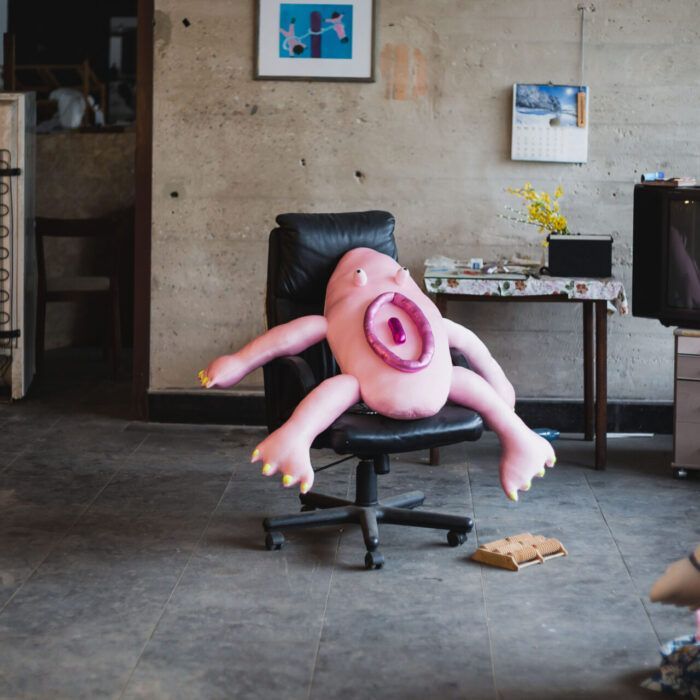
BIO / Alexandra Liput (born 1989, Poland) is a visual artist specialising in ceramics, painting, soft sculpture, objects and installations. Her work explores themes around anxiety, inherited traumas, broadly conceived spirituality as well as magic and magical objects. She’s a doctoral candidate and teaching associate in the Experimental Textiles studio at the Warsaw Academy of Fine Arts, and a co-founder of the Warsaw-based curatorial duo Dzidy. Among others, her works have been displayed at Labirynt Gallery in Lublin, Arsenal Gallery in Poznan, and Foksal Gallery Foundation in Warsaw. Furthermore, Liput is a finalist of the Coming Out best Arts Diplomas exhibition in Warsaw in 2017.
![Liput Aleksandra – z cyklu Lascaux, 2018, techn mieszana, 200x130cm [2] – [fot Adam Gut] 2000px Liput Aleksandra - z cyklu Lascaux, 2018, techn mieszana, 200x130cm [2] - [fot Adam Gut] 2000px](https://swarmmag.com/wp-content/uploads/2021/08/Liput-Aleksandra-z-cyklu-Lascaux-2018-techn-mieszana-200x130cm-2-fot-Adam-Gut-2000px.jpg)
![Liput Aleksandra – z cyklu Lascaux, 2018, techn mieszana, 160x140cm [2] – [fot Adam Gut] 2000px Liput Aleksandra - z cyklu Lascaux, 2018, techn mieszana, 160x140cm [2] - [fot Adam Gut] 2000px](https://swarmmag.com/wp-content/uploads/2021/08/Liput-Aleksandra-z-cyklu-Lascaux-2018-techn-mieszana-160x140cm-2-fot-Adam-Gut-2000px.jpg)
